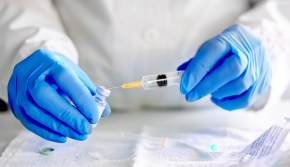Supercomputing project shifts focus to immediate outcomes for coronavirus patients

The nationwide public-private effort to supply COVID-19 researchers with supercomputing power is preparing for its second phase, which will prioritize research projects with immediate health benefits for coronavirus patients.
IBM will spearhead the six-month Phase 2 of the COVID-19 High Performance Computing Consortium, which will leverage the greater volume of anonymized patient data now available to better understand treatment outcomes.
The goal — as it was in March when the consortium launched — is to leverage “what we can do together,” Jamie Thomas, general manager of systems strategy and development at IBM Systems, told FedScoop. Many of the resources “that are now at the disposal of researchers were not that easily accessible in the past,” especially for smaller research organizations not tied to the government’s agenda, Thomas said.
Phase 1 of the supercomputing project focused on tracking the spread of the virus and processing data for vaccine development. The pivot announced Monday comes on the heels of Moderna’s claim that its COVID-19 vaccine is proving 94.5% effective in trials and Pfizer’s claim that its vaccine is more than 90% effective.
The White House and Department of Energy formed the consortium with IBM and have since grown it to 43 members, including Oak Ridge National Laboratory, Amazon Web Services and Google Cloud. Computing capacity has nearly doubled to 600 petaflops in that time, and more than 175 research proposals across 15 countries have been received — with upward of 90 being supported.
Phase 2 will use large clinical datasets to model patient response to the virus; validate vaccine response models from multiple clinical trials; evaluate combination therapies that use repurposed molecules; and create epidemiological models, the consortium said.
“I think at the end of six months we’ll do what we’re doing right now,” Thomas said. We’ll evaluate what we’ve achieved, what we’ve learned and that will then inform us as to what we might do next.”
Early project standouts include a Utah State University study of how long droplets from people’s breath linger in air and spread the virus; an Iowa State University study of “orphan” genes present in more vulnerable populations including the Black population; and a Michigan State University study of how to repurpose drug compounds for a viable vaccine.
The consortium could serve as an ongoing “science reserve” supporting efforts to address systemic medical issues beyond COVID-19 or even climate change, Thomas said.
DOE runs Summit, the world’s fastest supercomputer at 200 petaflops, which was designed by Thomas’ team.
IBM is also investing in quantum computing, which will be better at molecular analysis of COVID-19 but also things like longer-lasting battery research, Thomas said.





